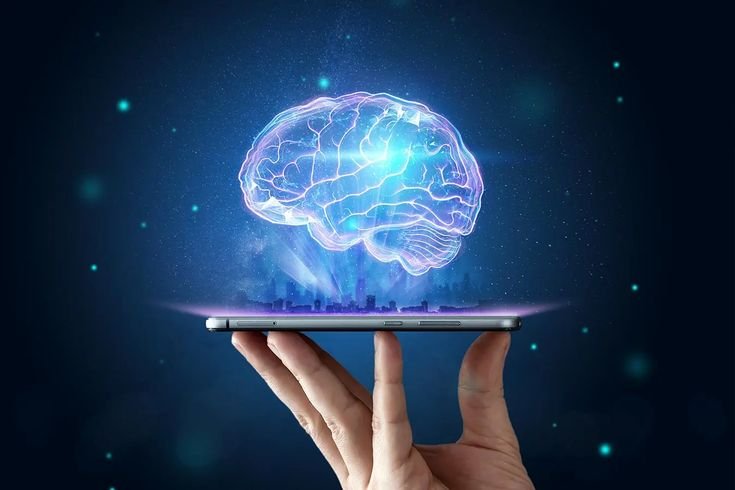Introduction
Think back to the first time your phone magically recognized a face in your photos. Or when Google Translate actually gave you a sentence that made sense. It felt like your device had suddenly grown a brain, right?
Well, that “brain” isn’t made of cells — it’s made of math, code, and a clever design inspired by how our own neurons connect and learn. That’s a neural network. It’s the hidden engine powering everything from the voice assistant in your kitchen to the medical software helping doctors detect diseases.
If AI is the mind, neural networks are the neurons and synapses that make it think.
So… What Exactly Is a Neural Network?
Let’s skip the heavy jargon.
– Neural: Inspired by the nerves in your brain.
– Network: A web of tiny, connected points working together.
Put them together, and you get a system that learns by example. Show it enough data, and it starts spotting patterns — just like we do when we learn from experience.
You’ve already seen them in action:
– Netflix predicting your next binge.
– Your car’s emergency braking spotting a pedestrian.
– Medical software flagging something suspicious on an X-ray.
Think of it as a supercharged pattern detector. Feed it enough cat photos, and it will figure out what makes a cat… a cat — even if it can’t explain it in words.
A Quick Trip Down Memory Lane
The dream of building a brain-like machine isn’t new — it just took decades to get right.
– 1940s–50s: The first “artificial neuron” was born. Cool idea, but too basic to be useful.
– 1960s–80s: Early networks flopped. Computers were slow, data was scarce, and interest faded.
– 1990s: Things improved. Better algorithms and faster machines let networks read handwritten zip codes.
– 2010s: The big boom. Thanks to GPUs (originally for gaming) and oceans of internet data, neural networks suddenly became great at images, speech, and language.
– 2020s onward: Now they’re behind AI that writes, paints, drives, and more.
As one researcher joked: “Neural networks were an overnight success — it just took 50 years.”
Why All the Hype?
Because they can do things traditional software simply can’t.
1. Spot Hidden Patterns – They find connections in data that humans would miss.
2. Learn and Adapt – The more quality data they get, the better they perform.
3. Automate the “Impossible” – From understanding speech to making medical calls.
4. Handle Massive Scale – They can process data sets no human team could touch.
5. Fuel Innovation – They’ve made possible things like real-time translation earbuds and apps for the visually impaired.
If modern AI is a sports car, neural networks are the turbocharged engine under the hood.
Neural Networks in the Real World
They’re not just lab experiments — they’re everywhere.
– Healthcare: Spotting tumors, predicting disease spread.
– Banking: Detecting fraud in seconds.
– Transportation: Helping self-driving cars navigate chaos.
– Agriculture: Drones scanning crops for water or disease issues.
– Entertainment: Recommending shows, creating filters, even composing music.
What used to be sci-fi is now quietly running your daily life.
Why Should You Care?
Because they’re already shaping your world.
– Convenience: Your voice assistant setting a timer while you’re cooking.
– Life-Saving: Early, accurate medical diagnoses.
– Safety: Predicting bridge repairs or engine failures before disaster strikes.
– Sustainability: Modeling climate change and optimizing energy use.
This isn’t “future tech” — it’s here, and it’s working for you.
The Challenges
Powerful? Yes. Perfect? Far from it.
– The “Black Box” Problem – They give answers, but we often can’t see how.
– Bias – If trained on biased data, they’ll repeat and amplify it.
– Energy Use – Training huge models can consume as much electricity as a small town.
– Data Hunger – They need massive, often hard-to-get datasets.
– Trust – Can we rely on systems we don’t fully understand?
As one ethicist put it: “Neural networks can be brilliant students — but they copy our flaws as well as our wisdom.”
Who’s Building Them?
It’s a mix of giants and everyday innovators.
– Tech Titans: Google DeepMind, OpenAI, Meta.
– Healthcare Startups: From drug discovery to personalized medicine.
– Automotive Leaders: Tesla, Waymo, and others betting on self-driving.
– Universities: Pushing for more ethical, explainable AI.
– Open-Source Communities: Tools like TensorFlow and PyTorch let anyone experiment.
What’s Next?
The road ahead looks exciting — and a little wild.
– Explainable AI – Making the “black box” more transparent.
– Efficiency – Doing more with less data and energy.
– Brain-Computer Interfaces – Helping people control devices with their thoughts.
– Everyday AI – From personal tutors to home robots.
– The AGI Debate – Could scaling neural networks lead to human-level intelligence? We’re not there yet, but the discussion is heating up.
It’s not just about smarter machines — it’s about how we choose to live alongside them.
Quick Questions, Straight Answers
Q: Do they think like us?
No. They’re great at spotting patterns, but they have no consciousness, understanding, or common sense.
Q: Will they take all our jobs?
They’ll change the job market. Some roles will vanish, but new ones will emerge to build, manage, and guide this tech.
Q: Why do they make silly mistakes?
Because they’re only as good as their training data. Bad data = bad results.
Q: Are neural networks the only kind of AI?
Not at all. They’re just one powerful type, and the future will likely mix them with other AI approaches.
